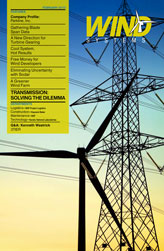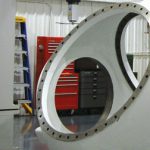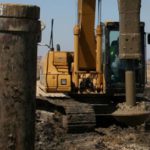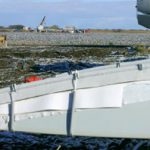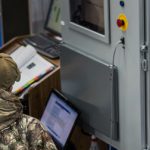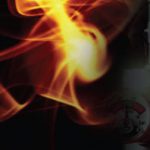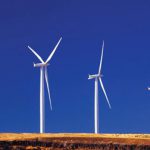The desire for more efficient, cost-effective, and environmentally friendly power generation continues to grow exponentially. Recently the U.S. Department of Energy (DOE) published a paper that examined the potential of increasing wind generation to 20 percent of the generated electricity in the United States by the year 2030, boosting the current production capacity of 16.8 gigawatts (GW) to 304.0 GW.1 Clearly, an increase of this extent would have dramatic impacts in technology, manufacturing and power transmission, in addition to the potential effects on the economy and the environment. To the goal of the DOE, one of the largest results of this initiative is the dramatic reduction in greenhouse gasses that are produced by the electricity sector from the burning of fuels that generate electricity.
In order to take advantage of wind to cleanly generate electricity, there are quite a few challenges that the electrical sector must address and overcome. Electrical equipment chosen for wind farm applications usually has extreme operating conditions and requirements, due to the fact that these systems tend to be located in remote areas with harsh environmental conditions. The electrical equipment must be able to withstand the surrounding environment, require little to no routine maintenance, and be very reliable. It is not practical to make frequent trips to a wind farm for routine maintenance or quality issues, and nuisance outages due to faulty equipment are unacceptable and expensive. Space challenges are also a major issue to overcome when designing the electrical distribution system of a wind farm. In addition to the generating turbine, a windmill tower is often required to house a complex collection of electrical equipment to collect, manage, and distribute the electricity that is generated. With limited space in the base of a windmill, it is critical to utilize very compact distribution system components.
Because of the need for compact electrical systems in wind farms, some installations include gas-insulated switchgear (GIS) for systems with voltages from 5,000–38,000 volts. GIS uses sulfur hexafluoride (SF6) gas as their primary means for electrical insulation. SF6 GIS is known for being extremely compact in size, which makes it functional for the space-saving needs for wind-generation applications. Since the 1950s the U.S. electric power industry has used SF6 widely in circuit breakers, GIS and other switchgear used in the transmission system to manage the high voltages (>38kV) carried between generating stations and customer load centers, but for systems with voltages below 38000V there are plenty of options available to meet power distribution needs without the use of SF6 gas for insulation. At a glance, SF6 systems or medium voltage GIS systems seem to be the perfect solution to the problems presented by the wind power application for electrical equipment, and as a result some engineers have begun to select medium voltage GIS for use in the wind power market.
Gas-insulated switchgear is not without its problems, however. It is important to note that SF6 is the most highly potent greenhouse gas that is classified by the Environmental Protection Agency (EPA) to contribute to air pollution that potentially endangers public health and welfare. The electrical power industry uses roughly 80 percent of all SF6 produced worldwide. Ideally, none of this gas would be emitted to the atmosphere. In reality, however, significant leaking occurs from aging equipment and gas loss occurs during equipment maintenance and servicing. With a global warming potential 23,900 times greater than CO2 and an atmospheric life of 3,200 years, one pound of SF6 has the same global warming impact of 11 tons (or 22,000 lbs) of CO2. In 2002, United States SF6 emissions from the electric power industry were estimated to be 14.9 Tg Co2 Eq.
Thus, while wind-generated electricity can have a large positive impact on the quality of the atmosphere by the reduction of CO2 emissions, the use of SF6-insulated electrical equipment in wind installations could be counterproductive to this goal. A wind farm cannot be considered “green” if it is exhausting greenhouse gases while generating electricity. Therefore, for a wind farm to produce actual clean energy, it should not rely on electrical equipment that uses SF6 as an electrical insulation. Unfortunately, there is a lack of education regarding the dangers of SF6 and a lack of awareness of the alternatives to gas-insulated switchgear that are available for use in compact electrical installations. Fig. 1
There are other aspects to consider, as well. For instance, SF6-insulated switchgear is sealed and pressurized, thus they are typically viewed as low maintenance. Additionally, the SF6 systems are generally comprised of switching devices that are bolted into place. This fixed-component design is often seen as an enhancement to reliability. When considering how these factors can be seen as solutions to the challenges for electrical components in wind installations, it is no wonder why these gas-insulated installations have sometimes been the product of choice for wind power generation applications. Fig. 2
As the industry becomes more knowledgeable, however, it is becoming apparent that there are obvious difficulties in maintaining a pressurized, sealed system and handling a potentially hazardous gas. It is also apparent that reliable fixed-component systems—available in many different configurations with and without SF6—may prove to be difficult to work on if there is ever an issue. The components in any fixed component system cannot be easily accessed or removed for maintenance, and if there is SF6 gas used for insulation the removal or replacement of a component is both more difficult, and more hazardous to the environment.
To this end, Eaton—a global power distribution company—has committed to providing the most compact medium voltage electrical products in the market without the use of any materials that could have potentially harmful side effects to the environment. Eaton has a full range of medium voltage electrical distribution products that provide ideal space-saving solutions for wind farm applications without the use of SF6 gas as an insulator.
Insulation systems that utilize a combination of solid insulators, normal air, and engineered current-carrying components can provide a homogenous barrier between the environment and the critical current-carrying components, in addition to adequate air clearances to prevent any dielectric breakdown. A variety of electrical systems with fixed-mounted components—such as Eaton’s MSB, Innovac MMS, and Xiria—are available to provide the reliability of bolted-in components for those that shy away from withdrawable circuit protection. There are also a variety of electrical systems that combine solid insulation, air clearance, and withdrawable elements, such as Eaton’s MEF, Innovac SVS, AMPGARD® and medium voltage variable frequency drive. These systems provide very high reliability in addition to reduced installation, maintenance time, and costs. By having the ability to reduce the maintenance cycle with withdrawable components that can be easily removed and replaced, downtime can be greatly minimized.
Remote-monitoring systems like GearGard® and InsulGard™ are available from Eaton, and they can provide a customer with real-time information about the operating conditions of the equipment, including temperature, humidity, and insulation health. These systems can monitor a customer’s electrical system, send periodic current system health statements to a customer, and even predict a potential issue far enough in advance to plan and schedule maintenance that will prevent a possible surprise outage.
Eaton has chosen to invest in research and engineering to develop insulation systems that reduce the size of equipment using solid insulation, electrical field control, and extremely compact Eaton vacuum interrupters. The company’s dedication to a cleaner environment drives them to more innovative methods for reducing the size of equipment, while increasing the capabilities of the equipment at the same time. Additionally, keeping wind farm installations in mind—which may be required to conform to multiple or varying standards—Eaton offers compact medium voltage electrical equipment worldwide that is designed to conform to both International Electric Code (IEC) and American National Standards Institute (ANSI) standards.
References:
1) www.windpoweringamerica.gov/filter_detail.asp?itemid=1917
2) www.epa.gov/electricpower-sf6/basic.html



















